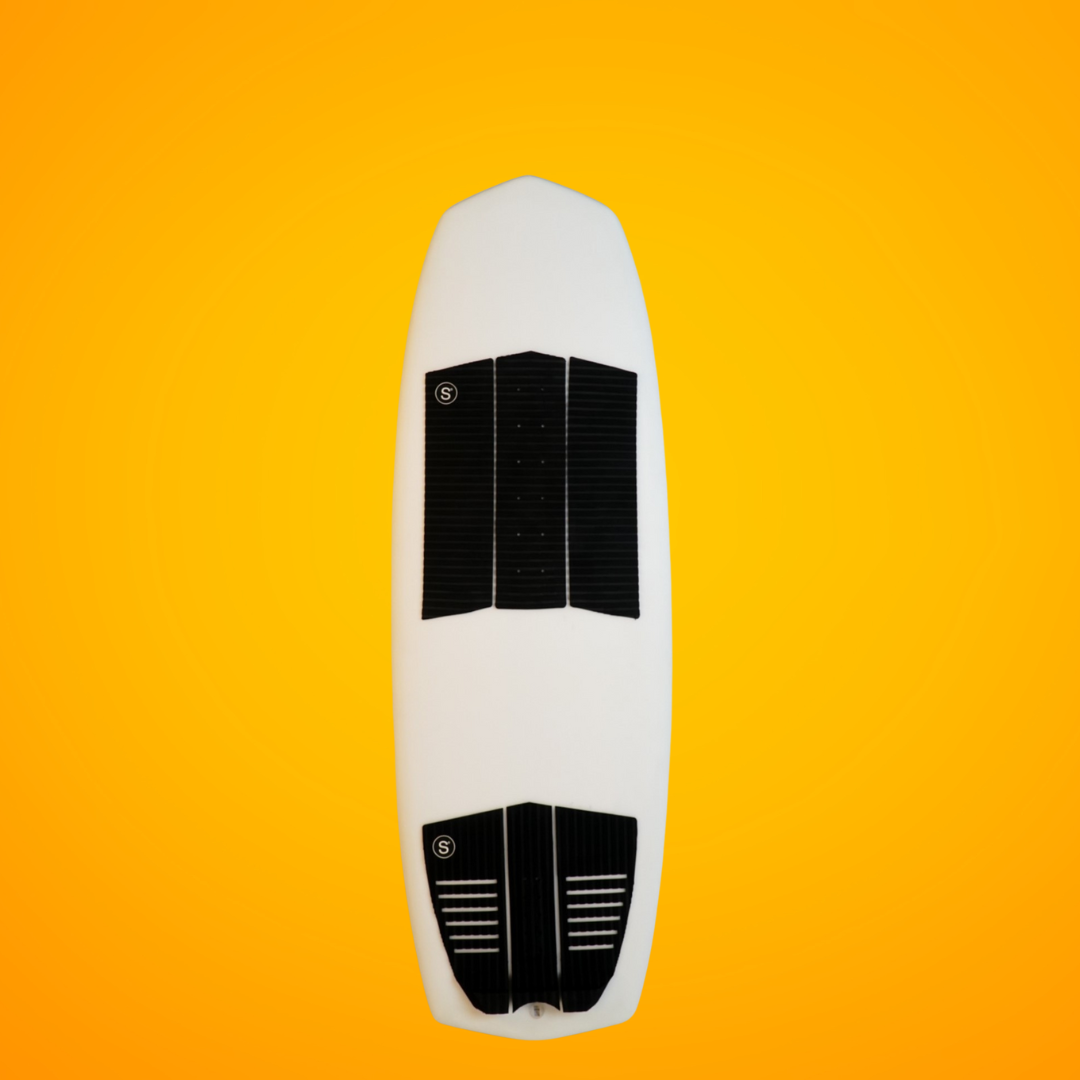
Beyond the Basics: Diving Deeper into the Physics of Wakesurfing for Bigger Riders
Share
In our previous article, Why Bigger Wakesurfers Struggle To Stay on the Wave and What To Do About It, we broke down the core challenges—from the tug-of-war between gravity and buoyancy to the roles of drag and moment of inertia (MOI). Today, I want to dig deeper into the physics behind these issues and share some nuanced, immediate tweaks you can make on your current board—no need to shell out for a new one. Understanding these factors isn’t just academic; it’s about gaining more control, confidence, and ultimately, a better ride every time you hit the water.
A Closer Look at the Forces in Play
Gravitational Force vs. Buoyant Force: Why It Matters
We know gravity pulls you down and buoyancy pushes you up, but there’s more to the story:
Gravitational Force:
For bigger riders, gravity not only adds extra load but can also cause your board to flex slightly under pressure. This subtle deformation can compromise the board’s ability to maintain optimal buoyancy, especially during quick maneuvers. In other words, if your board isn’t holding its shape, you’re not getting the full lift you need, which can make every turn feel less responsive.
Buoyant Force:
The materials and construction of your board are crucial here. Under heavier loads, a board that’s built to displace water efficiently will perform better—even if two boards have similar volumes. If your board doesn’t “bounce back” as it should, you’re more likely to sink deeper, which means more drag and less control.
Understanding this balance is important because if you can maximize buoyancy without completely overhauling your board, you’ll be in a better position to harness the wave’s energy more effectively.
The Nuances of Drag Force and Propulsion: Keeping Your Ride Smooth
Drag Force:
When you lean back, your board exposes a larger surface area to the water, which doesn’t just slow you down—it creates turbulent water flow. These turbulent eddies or vortices can act like mini roadblocks, further slowing your progress. For bigger riders, even a slight increase in drag means you have to work much harder to stay in control. Knowing this, you can adjust your stance to minimize turbulence and keep your ride as smooth as possible.
Forward Propulsion:
The wave is doing all the work by pushing your board forward, but its energy is less effective when you’re riding in deeper water due to extra drag. If you understand how your weight affects the flow of water around your board, you can fine-tune your stance to ensure that the wave’s energy isn’t wasted. This means more speed, better turns, and ultimately, a more enjoyable ride.
Moment of Inertia (MOI) and Weight Distribution: Why Every Ounce Counts
Moment of Inertia:
MOI measures how resistant your board is to changes in motion. For bigger riders, a higher MOI means that every shift in weight can result in a pronounced change in the board’s angle. Think of it like trying to steer a massive ship—you need to anticipate your moves well in advance. By understanding your board’s MOI, you can start to predict how it’ll respond to even minor adjustments, giving you a competitive edge.
Weight Distribution:
When your center of gravity isn’t aligned with the board’s center of buoyancy, even tiny errors in your stance can lead to dramatic shifts in the board’s behavior. For larger riders, this means that precision is key. Mastering weight distribution isn’t just about balance—it’s about reducing drag and maximizing the forward thrust from the wave. This insight can transform your riding from a constant struggle to a smooth, dynamic experience.
Creative, Immediate Adjustments to Optimize Your Ride
Let’s talk tweaks—small changes that can have a big impact on your performance without requiring a new board:
Fine-Tuning Your Stance for Better Balance
Subtle Shifts, Big Impacts:
Instead of drastic changes, try moving your feet just a fraction of an inch forward. This small shift can reduce the area of your board exposed to turbulent water and help balance the forces at play. The result? You’re maximizing the wave’s push against gravity without overloading the back of your board.
Optimized Body Angle:
Dropping your center of gravity by lowering your body isn’t just about stability—it also minimizes the lag caused by a high MOI. When your board reacts more predictably to your movements, you’ll feel more connected to the wave and in control during rapid transitions.
Equipment Tweaks with an Edge
Enhanced Grip Solutions:
Upgrading to a high-performance grip wax or adding grip tape can make a world of difference. Better traction means you can execute those precise weight shifts more confidently, even when gravity is working overtime against you.
Refined Fin Adjustments:
Experiment with the angle and placement of your fins. A slight change can streamline water flow, reducing turbulent drag and improving tracking. This isn’t just about stability—it’s about fine-tuning your board’s response so that every move feels natural and controlled.
Surface Texture Enhancements:
Consider modifying the texture of your board in key areas. A light sanding or a grit-infused finish on high-contact zones can adjust the friction profile, making your weight shifts more responsive. This simple tweak can help you react more effectively to the dynamic conditions of the wave.
Why This Matters
Understanding the physics behind your ride isn’t just a technical exercise—it’s a roadmap to better performance. When you know how gravity, buoyancy, drag, and MOI affect your board, you’re equipped to make smarter tweaks that directly impact your ride quality. For bigger riders, these insights mean smoother transitions, faster responses, and ultimately, more fun on the water—all without needing a new board.
Have you tried any of these tweaks? How has understanding the “why” behind your board’s behavior helped you improve your ride? Share your experiences in the comments, and let’s keep the conversation going on how physics meets practice in the world of wakesurfing.
